 National Museum of Singapore (30 July 2017)
National Museum of Singapore (30 July 2017)
National Museum of Singapore (GPS: 1.29663, 103.84858) at 93 Stamford Road is the oldest museum in Singapore. It was started in 1849 as a section of a library at Singapore Institution. After moving to several locations, the museum for its permanent address at Stamford Road at the Museum Planning Area in 1887.
The National Museum of Singapore is one of the four national museums in Singapore, the other three being the Asian Civilisations Museums at Empress Place Building, the future Peranakan Museum to be housed in the Old Tao Nan School, and the Singapore Art Museum at St Joseph's Institution Building. The National Museum of Singapore focuses on exhibiting items related to the history of Singapore. It was named the National Museum of Singapore in 1965, but between 1993 and March 2006, it was called the Singapore History Museum. It reverted to being called the National Museum of Singapore when it reopened on December 2, 2006.
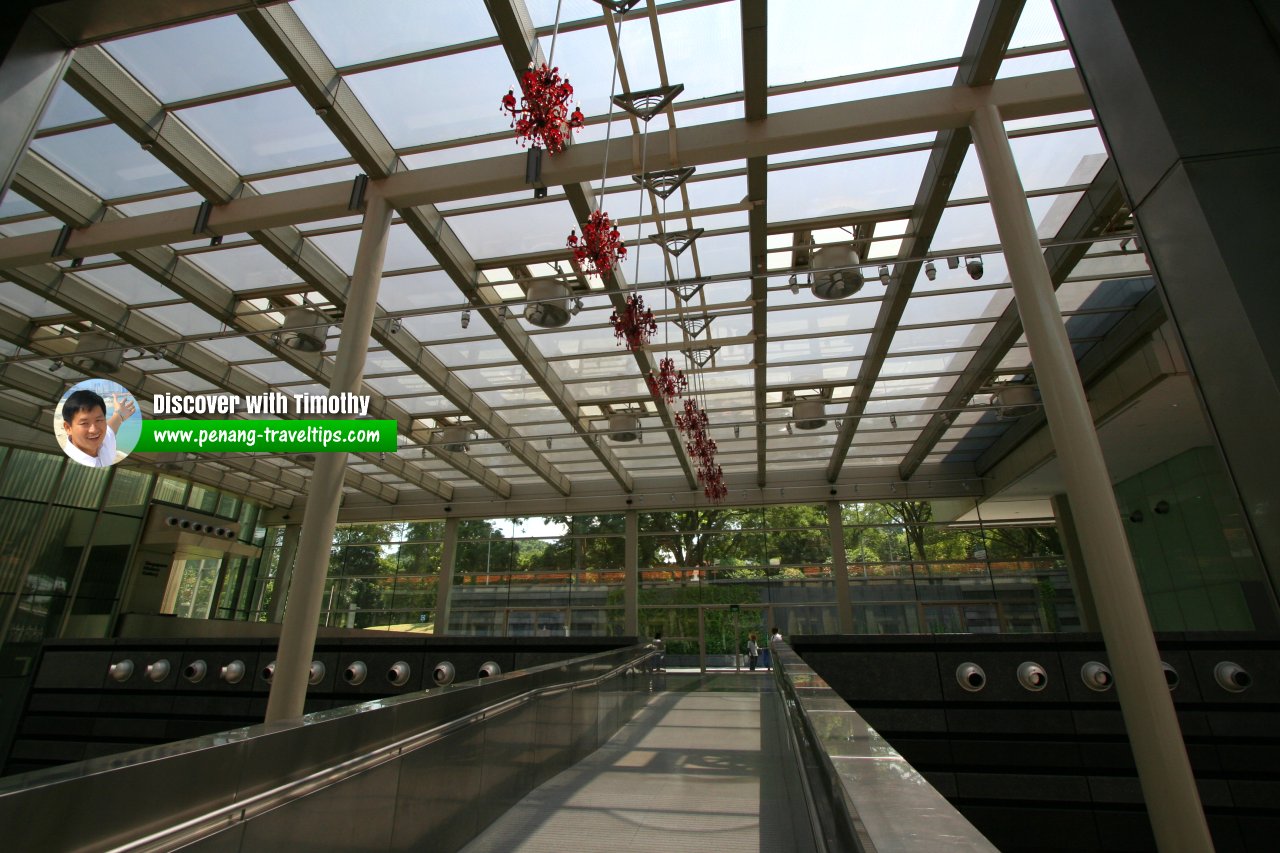 Linkway, National Museum (13 September 2010)
Linkway, National Museum (13 September 2010)
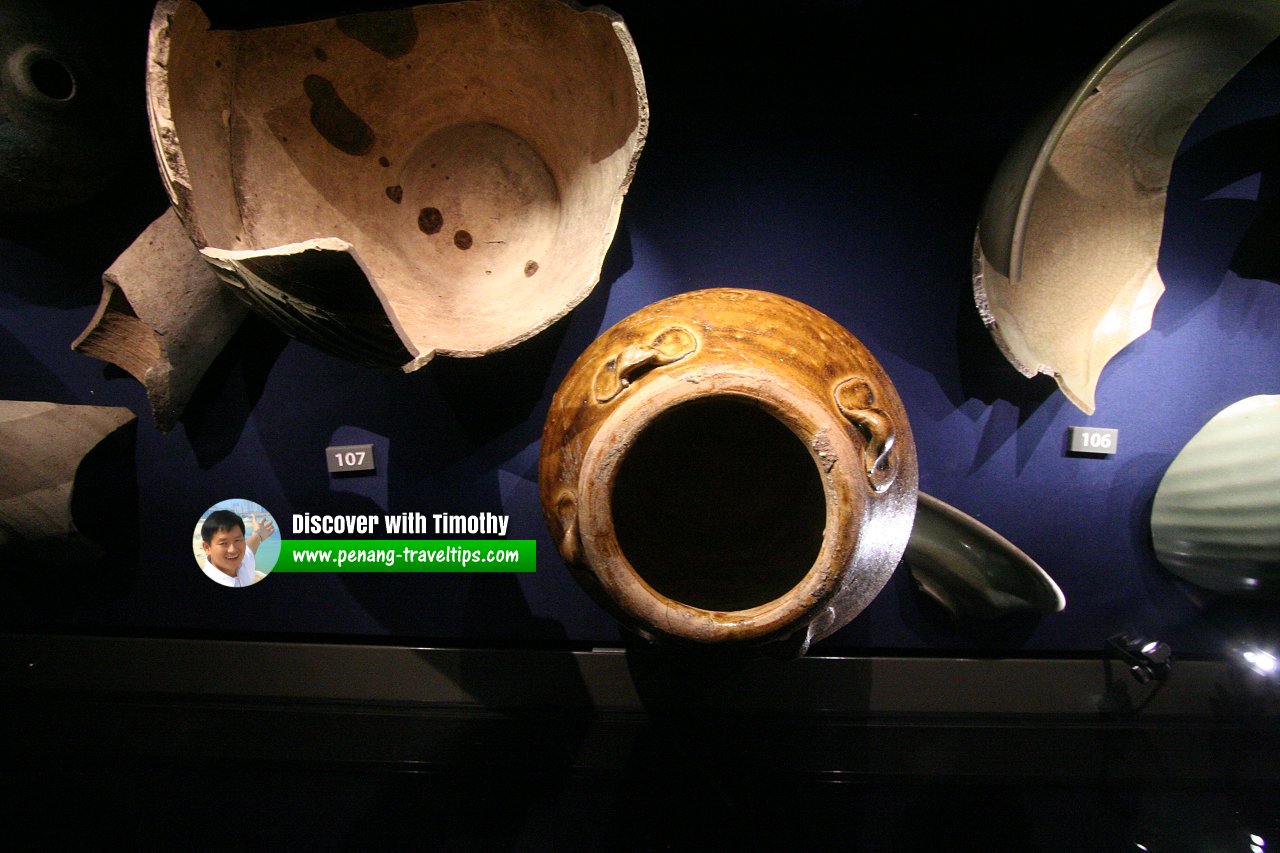 Pre-Raffles relics, National Museum (13 September 2010)
Pre-Raffles relics, National Museum (13 September 2010)
The revamped National Museum of Singapore was officially opened by President of Singapore S R Nathan and Minister for Information, Communications and the Arts Lee Boon Yang on 7 December, 2006.
The National Museum of Singapore was designed in Neo-Palladian and Renaissance styles. It consists of two rectangular parallel blocks, with a dome at the front of the building. The original building was designed by Henry McCallum. J.F. McNair designed the scaled down version of the building.
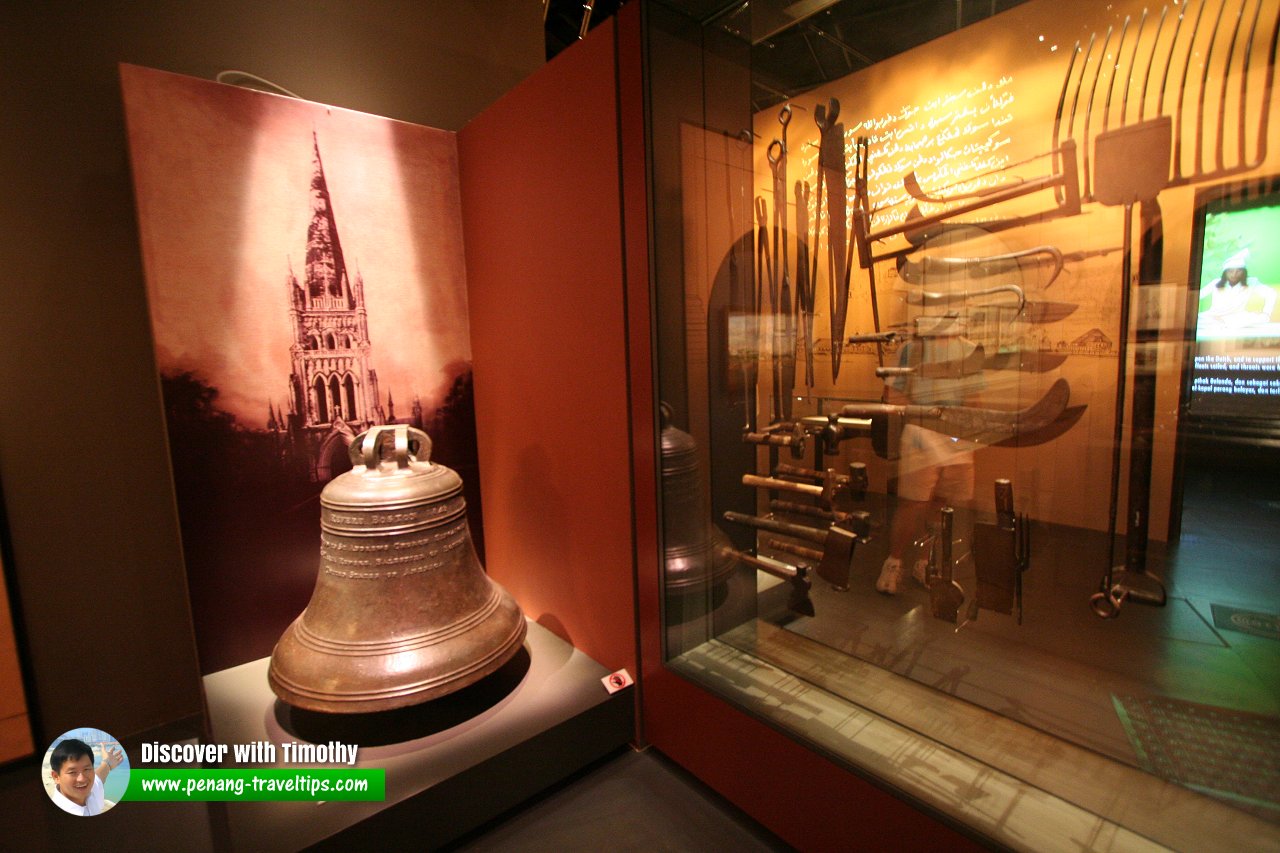 Exhibits in the National Museum (13 September 2010)
Exhibits in the National Museum (13 September 2010)
The National Museum building has two rotundas - the new glass-clad rotunda is located at the rear area of the building. The glass rotunda caps a cylindrical shaped building which is made up of two drums, with the outer one made of glass sheathing an inner one made of wire mesh. Black out curtains over the length of the inner drum have images projected on it from sixteen projectors. The curtains are drawn after sunset and the projection can be beamed out through the glass to get a view of the city.
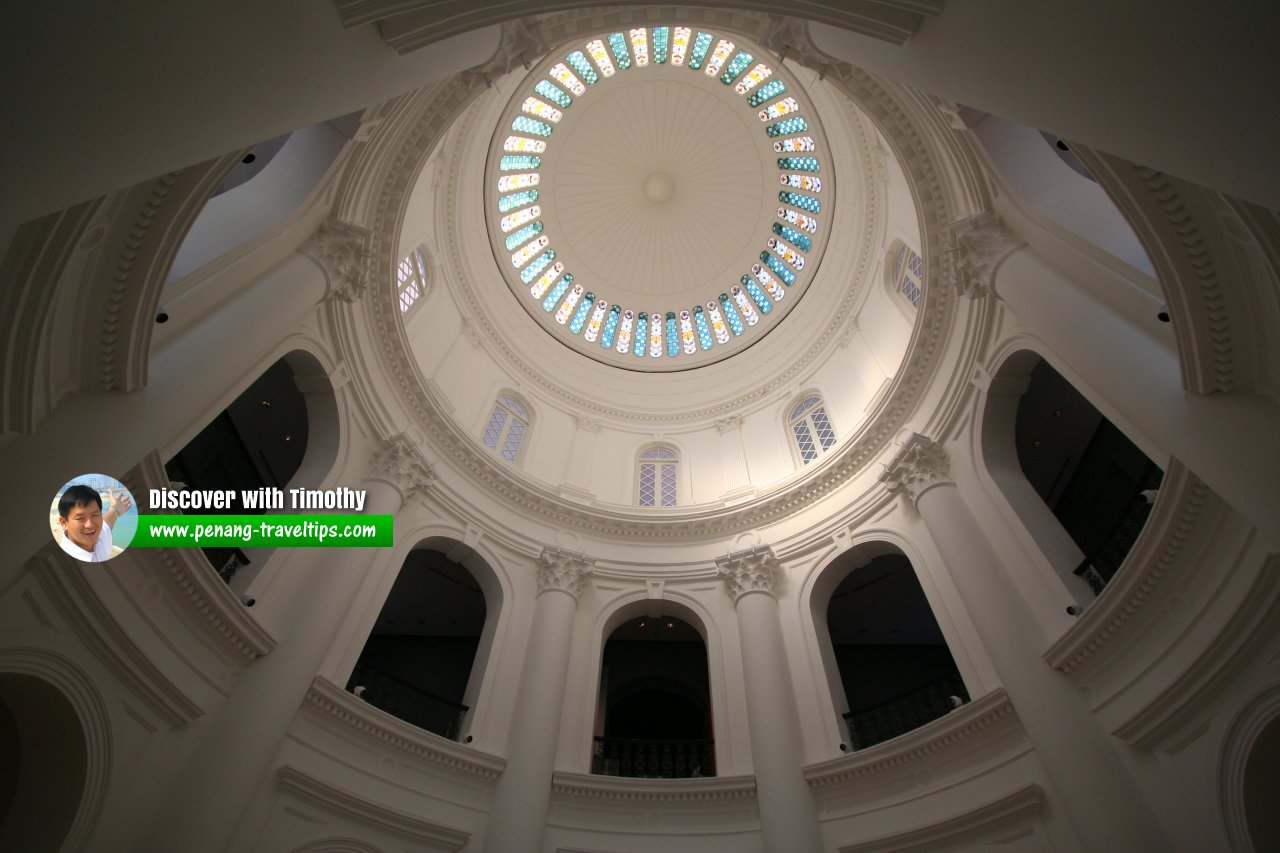 Rotunda of the National Museum (13 September 2010)
Rotunda of the National Museum (13 September 2010)
The redevelopment of the National Museum of Singapore was carried out by local architectural firm W Architects with the glass-clad rotunda designed inspired by Chinese American I.M. Pei. The new glass clad building was designed so as not to overwhelm the old building, which is still be the centrepiece of the museum. A six-metre gap between the main museum building and its new annexe was established to conform with conservation guidelines of not allowing old and new buildings to be directly connected.
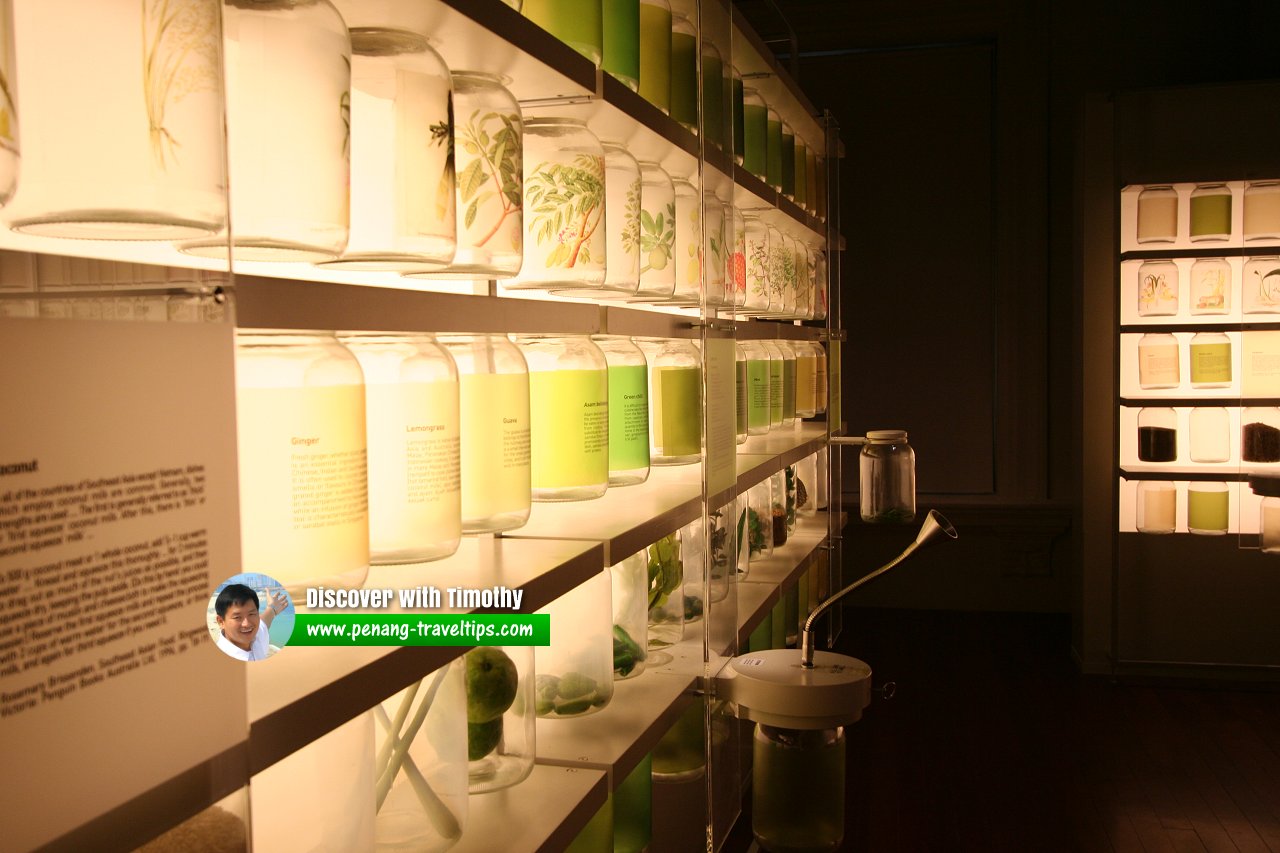 Herbs and botany exhibits, National Museum (13 September 2010)
Herbs and botany exhibits, National Museum (13 September 2010)
The National Museum of Singapore presently houses eleven precious artifacts, namely the Singapore Stone, the Gold Ornaments of the Sacred Hill from East Java, Dagguerreotype of Singapore Town which was one of the earliest photographs of Singapore, the will of Munshi Abdullah, the portrait of Frank Athelstane Swettenham, the hearse of Tan Jiak Kim, a Peranakan coffin cover, the mace of the City of Singapore commemorating King George VI's raising of the island's status to a city in 1951, the Xin Sai Le puppet stage, William Farquhar's drawings of flora and fauna and the portrait of Shenton Thomas, who was the former governor of Singapore. Rocks from the nearby Fort Canning Hill were used to create two sculptures commissioned from Cultural Medallion-winner Han Sai Por.
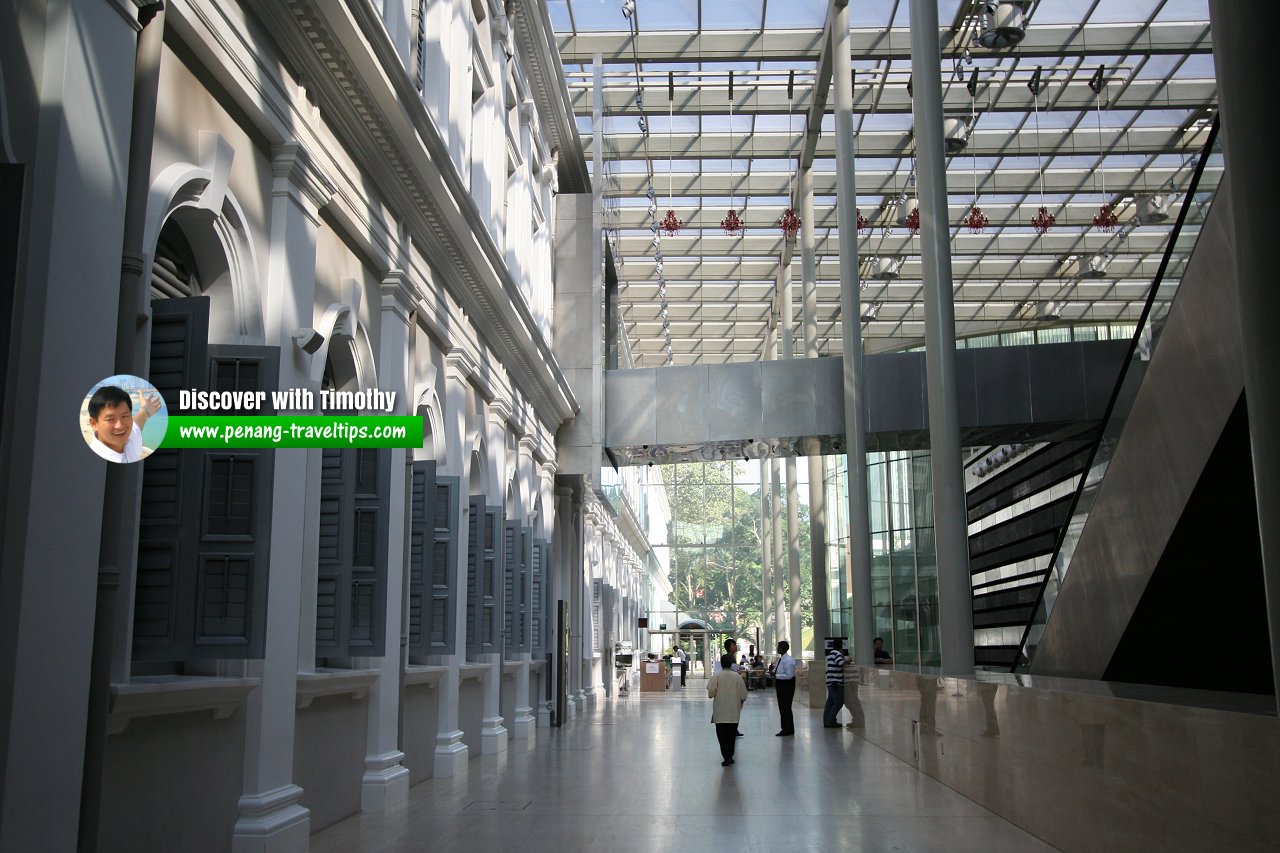 The original building and the new glass-clad annex (13 September 2010)
The original building and the new glass-clad annex (13 September 2010)
The National Museum building was closed for a period of three and a half years when it underwent a S$132.6 million revamp with the construction of the new annexe block behind the main building. The new wing is partially built on ground excavated from nearby Fort Canning Hill. A ceremony to lay the foundation stone was held on 25 November 2004 and at that ceremony, the museum publicly announced the name change. Another ceremony to top out the building was held on 28 November 2005. With the revamp, the National Museum of Singapore enjoys twice as much space as the old building.
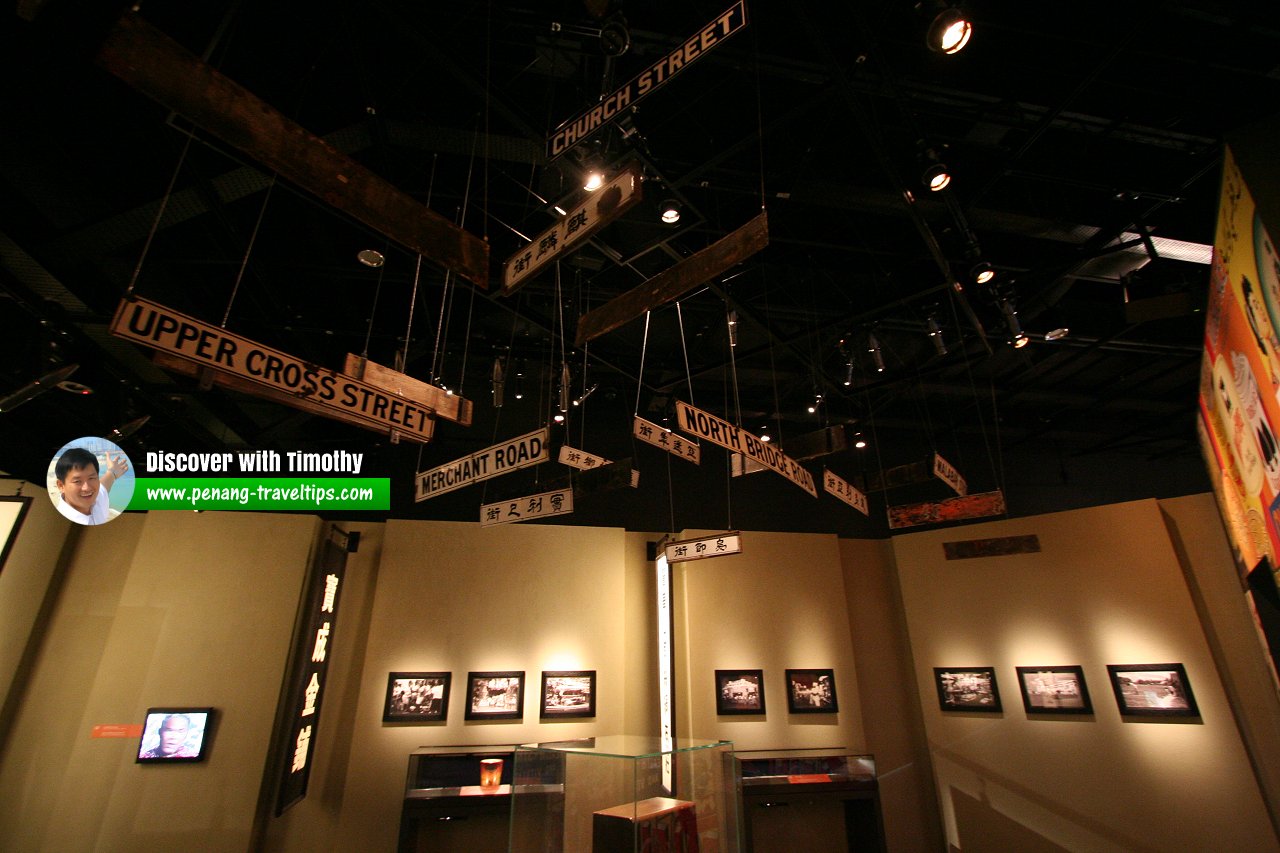 The old street signs, having been replaced, found a new home in the National Museum (13 September 2010)
The old street signs, having been replaced, found a new home in the National Museum (13 September 2010)
Poorly executed restoration works of the 1980s caused some of the museum's architecture features to be hidden or damaged. The fish scaled tiles of its dome had to be taken down and cleaned. There were all together 3,000 tiles. These had to be individually numbered in order to allow them to be put back in the correct sequence. Every row of tiles was shaped differently to match the dome's curve. Badly restored tiles were replaced using the original zinc material used in the old 19th century tiles made in Manchester, England.
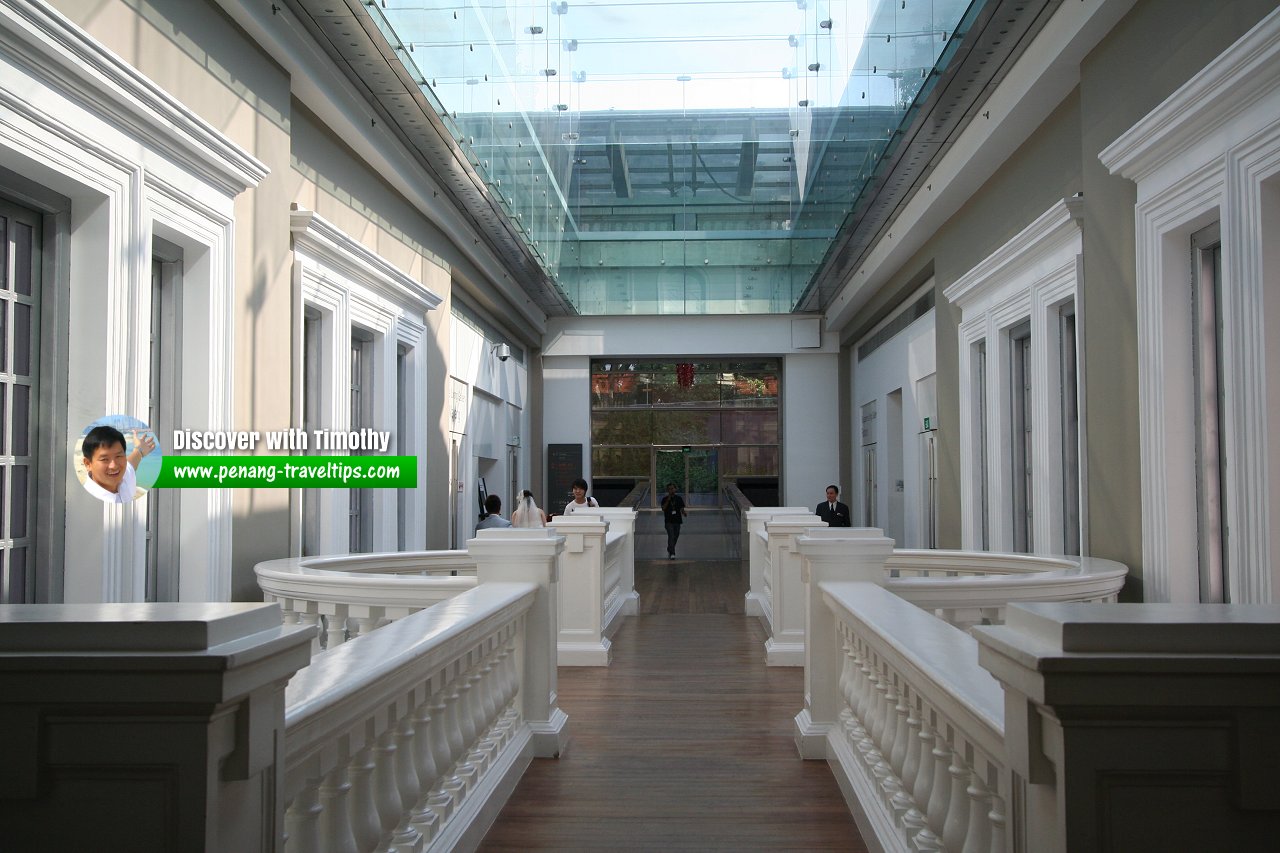 Central atrium, National Museum (13 September 2010)
Central atrium, National Museum (13 September 2010)
The stained glass panels on the dome were also taken down, inspected and cleaned. Some had deteriorated from age and the effects of gravity on the lead works. A spiral staircase that leads to the roof of the old museum building was restored. The windows and doors were conserved and the original type and size of timber and 18th century carpentry techniques were used to restore the timber windows and doors. Some of the original timber works used huge timber sections made of kapur wood.
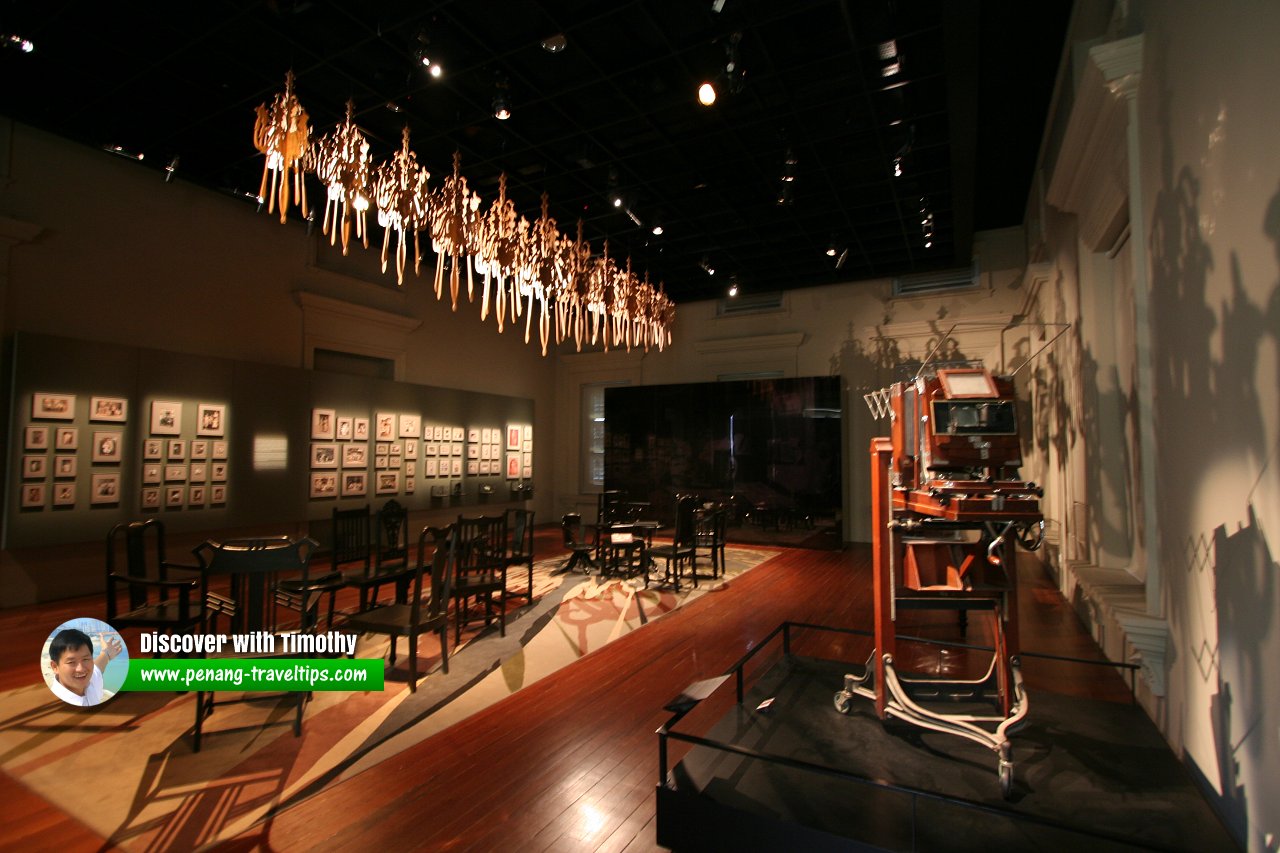 Modern art gallery, National Museum (13 September 2010)
Modern art gallery, National Museum (13 September 2010)
National Museum was redeveloped with the aim of reconnecting it with its park-like surroundings, that is, the Fort Canning Park and Bras Basah Park.
National Museum of Singapore was gazetted a National Monument of Singapore on 14 February, 1992.
Getting there
The National Museum of Singapore is some 15 minutes walking distance from the nearest MRT Station, which is the Dhoby Ghaut MRT Station, served by the Circle Line (CC1), North East Line (NE6) and North-South Line NS24).National Museum of Singapore is  on the Map of Stamford Road, Singapore
on the Map of Stamford Road, Singapore
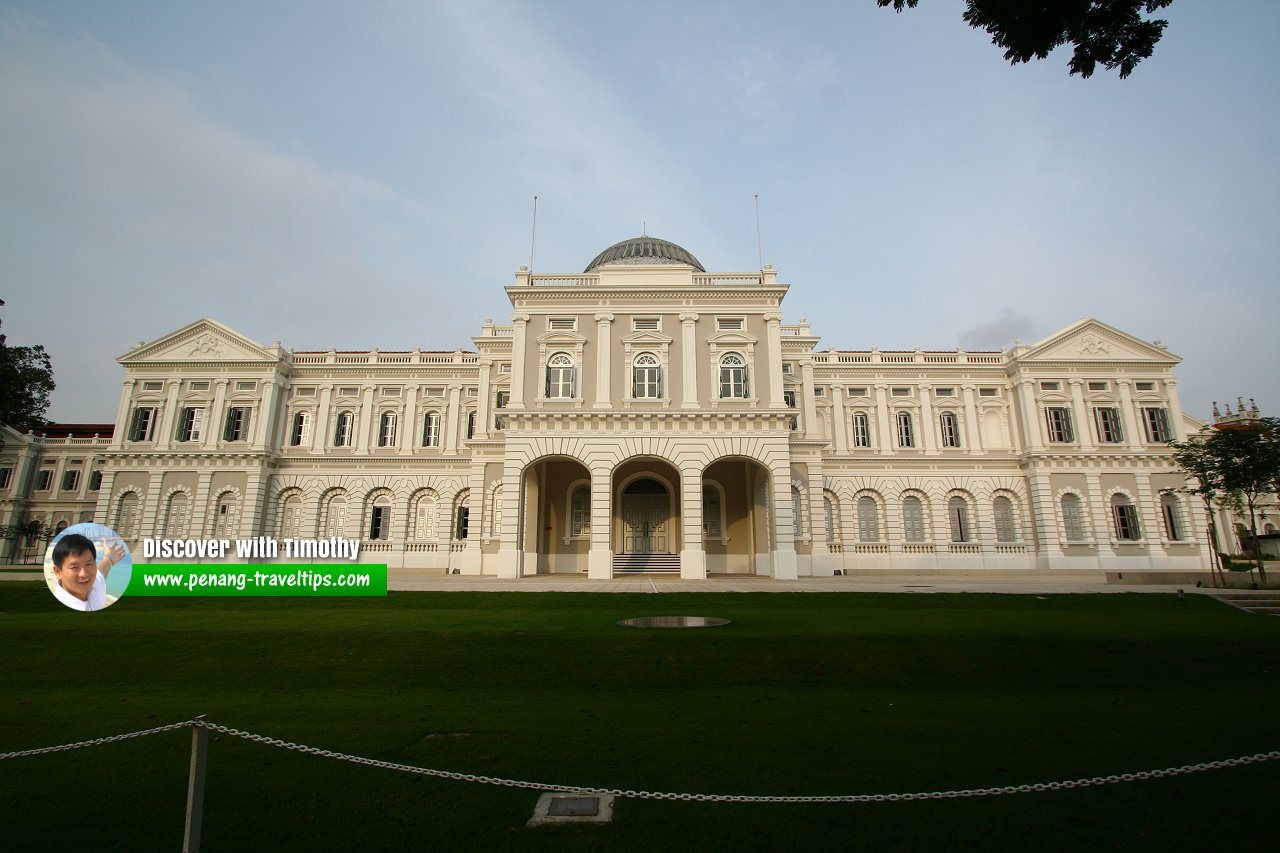 National Museum of Singapore, front view (9 July 2006)
National Museum of Singapore, front view (9 July 2006)
National Museum of Singapore on Google Street View
National Museum of Singapore (Feb 2022)List of Museums in Singapore; Discover Singapore
 Copyright © 2003-2025 Timothy Tye. All Rights Reserved.
Copyright © 2003-2025 Timothy Tye. All Rights Reserved.
Copyright © 2003-2025 Timothy Tye. All Rights Reserved.

 Go Back
Go Back